
8:00 am - 8:15 am |
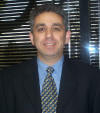 Farhad
Mafie, President and CEO of Savant Company Inc. Farhad
Mafie, President and CEO of Savant Company Inc.
"Welcome and Opening Remarks, Technology/Market Trends."
Farhad
has over 20
years of experience in semiconductor and computer businesses and more than 10
years of university-level teaching experience. Farhad is the former
Vice President of Marketing/Business Development and Technical Sales Engineering at
Toshiba America Electronic Components, Inc. He was responsible for marketing
the entire Toshiba standard ICs (RISC/CISC CPUs, Configurable CPUs, DSPs, Bluetooth,
Wireless ICs, RFID, MPEG-4, CCD/CMOS, Analog ICs, Automotive ICs, etc.).
He was also responsible for engineering development for Toshiba's Embedded and Digital Consumer
products & solutions based on ASSP and SoC Models.
Farhad established Toshiba's on-line
Tech-Support System as well as Toshiba's on-line System Solution Selling
methodologies for all Toshiba's products in the North American markets.
These on-line systems were adopted by Toshiba on a worldwide basis. He
also developed Toshiba's ASSP Business Unit and Technical Sales Engineering
Team as two brand new organizations for the company.
Farhad has also worked at Lucent Technologies
on marketing communications ICs,
Toshiba Information Systems on product definition for Toshiba's notebooks
and handheld products, Unisys on designing new processors and computer
systems, and MSI Data on
designing data collection products. He has a Master of Science and a
Bachelor of Science degree in Electronic Engineering from California State
University, Fullerton.
His combined business and academic experience has
given Farhad a unique ability to effectively communicate complex new
technologies to business professionals at all levels, as well as the ability to
foresee emerging leading-edge technologies.
Farhad is an author and a
translator, and he writes articles for a variety of journals and Web-based
magazines on technology and political affairs.
|
|
8:15 am- 8:45 am
Keynote |

Derek
Lidow,
CEO and President, iSuppli
"New
Realities Mandate Fundamental Changes in Competitive Strategies"
During the
past several years of downturn and weak recovery, the foundations of the
semiconductor business have been dramatically altered, which in turn will
cause changes in the nature of the industry's unit growth and price
dynamics, requiring very different strategies for success on the part of
chip suppliers. The rules of thumb developed by successful semiconductor
executives over the past 30 years don't apply anymore--and can't yield the
same kind of success they did previously.
Derek founded
iSuppli to provide the visibility, resources, and control to improve the
electronics industry value chain. iSuppli accomplishes this by gathering and
disseminating unique value chain data and information and by working with
its clients to use the information to make better and faster business
decisions.
Prior to
founding iSuppli, Derek was CEO of International Rectifier, a leading power
semiconductor company. Derek earned a BSEE degree Summa Cum Laude from
Princeton and a Ph.D. in Applied Physics from Stanford as a Hertz Foundation
Fellow. |
|
8:45 am - 12:00 am |
CPUs & DSPs for SoC
Applications
|
|
|
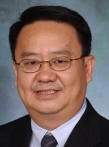 Dr. Thanh
Tran, Senior Member Technical Staff,
Texas
Instruments, Inc. Dr. Thanh
Tran, Senior Member Technical Staff,
Texas
Instruments, Inc.
“Flexible Multimedia SOC Platform”
ABSTRACT: One of the biggest challenges designers face as
they approach developing today’s increasingly complex multimedia systems is
determining the appropriate mix of processing elements to use to optimize
the three Ps: system performance, price, and power consumption. The SOC
(system-on-a-chip) integration that makes today’s innovations possible often
involves combining different processing elements on a single device. These
elements can include programmable functions, such as general-purpose
(usually RISC) microprocessors, DSPs, and accelerators. Because all of these
elements are available as dedicated devices or as a single SOC, evaluating
trade-offs among them and determining how to most effectively use them can
be a source of considerable difficulty.
Dr. Thanh Tran has 20 years plus of experience in audio,
video, computer and communication systems design and is a Hardware
Productization Manager and a Senior Member Technical Staff at Texas
Instruments Incorporated where he is leading an embedded systems team to
assist customers and to develop reference designs and frameworks for high
speed complex SOC systems. He has held other senior design positions at
Compaq Computer, ReplayTV, Eagle Wireless Incorporated, Bose Corporation and
Zenith Electronics Corporation. Dr. Tran is an IEEE Senior member and currently
serves on the Texas Instruments Developers Conference Advisory Committee and
the IEEE System-On-Chip Organizing Committee. He has published over 14
technical papers and current holds 18 issued patents related to designs of
computer, video, audio and communication systems. Tran’s doctoral research,
gated direct sequence spread spectrum clock distribution system, led to
three patents pending and a startup company, X-EMI, in Texas. He is
currently an adjunct faculty member at Rice University where he is teaching
a graduate electrical engineering course in digital audio and video systems
design. Tran received a BSEE degree from the University of Illinois at
Urbana-Champaign, Illinois and Master of Electrical Engineering and Ph.D. in
Electrical Engineering degrees from the University of Houston, Houston,
Texas.
|
|
|
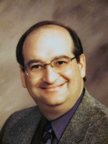 Steve
Leibson, Technology Evangelist, Tensilica, Inc. Steve
Leibson, Technology Evangelist, Tensilica, Inc.
"Media
processing for wireless SOC applications: reduce design risk with
configurable processor cores"
Media processing is rapidly becoming a “must have” in SOCs
targeted at wireless applications. However, the standards used for audio,
video, and image compression/decompression refuse to stand still. Changing
standards and market requirements greatly increase the risk that an SOC
design will lack key features or will just be wrong before the chip hits the
market. Adding some form of programmability to the SOC’s design is the
industry’s well-accepted remedy to this risk. Programmability in the
form of configurable processor cores that can be retasked with firmware
changes is the lowest risk, most cost effective way to add numerous
media-processing functions including multiple codecs to complex SOC
platforms. By adding these functions through configurable processors, rather
than hand coding them in RTL, designers make these functions programmable,
giving the SOC platforms plenty of flexibility for changing standards and
feature sets. First, this presentation will discuss the advantages of this
SOC design approach including lower design risk, the ability to run multiple
media-processing codecs on one hardware core, and the ability to keep clock
rates low through processor architectural tailoring. The presentation will
then illustrate the approach with some real examples of products on the
market that have employed configurable processor cores for media-processing
applications.
Steven Leibson is the Technology Evangelist for Tensilica,
Inc. and is the co-author of the recently published book, “Engineering the
Complex SOC” (Prentice Hall, 2004). He formerly served as Vice President of
Content and Editor in Chief of the Microprocessor Report, Editor in Chief of
EDN Magazine, and Founding Editor in Chief of Embedded Developers Journal
magazine. He has written hundreds of articles for several electronics
industry trade magazines and he has won many industry awards for his clear,
detailed writing. While at MDR, Leibson developed and presented many
technical, day-long microprocessor seminars and he organized and served as
MC for the Microprocessor and Embedded Processor Forums. He holds a BSEE Cum
Laude from Case Western Reserve University and worked as a design engineer
and engineering manager for leading-edge. |
|
9:45 am - 10:00 am
|
 Coffee Break Coffee Break |
|
|
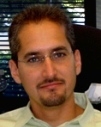 Eran
Briman, Technology Director, Marketing and Business Development, CEVA Eran
Briman, Technology Director, Marketing and Business Development, CEVA
"The
Challenges of Designing a Pure-Software H.264 Solution"
Wireless multimedia devices, including multimedia phones,
smartphones and wireless PDAs, need to strike a thin and sometimes elusive
balance between power consumption, feature set and cost. This is
particularly true for today’s wireless market, benefiting from 3G networks,
high level of system integration and low bit-rate video codecs, but fiercely
fighting tape-out costs and decreasing battery life. When balancing
the cost, power and feature set of a multimedia wireless devices, another
significant factor needs to be considered. The coexistence of numerous media
standards serving various multimedia applications requires a platform that
can be flexible enough to accommodate all of them, namely a software-based
solution. Furthermore, building a pure-software solution that is powerful
enough can serve future standards that are not yet finalized.
Eran Briman serves as the Technology Director, Marketing and
Business Development, analyzing market requirements and trends and
specializing in wireless communications and multimedia applications. Prior
to that, Eran was the Chief Architect for CEVA, responsible for the research
and development of next generation DSP Cores, including the CEVA-X DSP and
other enabling technologies. Before joining CEVA, Eran was with the DSP
Group since 1995, holding different engineering and R&D management
positions. In total, Eran was involved in marketing and engineering of four
DSP cores, and has profound knowledge in DSP architectures, implementations
and applications. Eran has a B.Sc. degree in Electronic Engineering from
Tel-Aviv University and an MBA degree from the business schools in
Northwestern and Tel-Aviv Universities. Eran holds several patents on DSP
Technology and has published numerous articles and white papers.
|
|
|
 Kevin
Christensen, Director Business Development, Elixent Inc. Kevin
Christensen, Director Business Development, Elixent Inc.
"Low
Power Video for Mobile SoCs"
Consumers and operators demand mobile video quality approaching SDTV - on
a mobile phone. But they also demand battery life of several days, and
interoperability across multiple networks and across all emerging video
standards. They want access to all the video content available,
unencumbered by the limitations of format - or by the limitations of their
battery life. They want the best of both worlds. At the lowest level, what
they need is the flexibility of software, but with the efficiency of
hardware. For several years this has been the clarion call of the
reconfigurable community. Christensen will outline Elixent's offerings in
this space which offers world-beating power consumption - an order of
magnitude below solutions based on processors.
Kevin joined Elixent in October of 2001 and has been evangelizing
reconfigurable technology since then. He is responsible for developing
key customer and partner relationships for Elixent and headed formulation
of the Toshiba and Panasonic partnerships.
Kevin is a 19 year semiconductor veteran. Prior to joining Elixent
Christensen held positions at Motorola, Conexant, and Endpoints at
vice-president and director level, where he was responsible for developing
and leading business strategy, strategic partnerships, and product
marketing, focused on a “mobile visual communications” strategy. At
Motorola he led the development of the strategy and partnership with Kodak
for joint development of
CMOS
sensors. At Conexant he developed the strategy and performed due
diligence for the $43 million acquisition of Sierra Imaging.
Kevin has a BSEE from
Brigham
Young
University and
a MS in Management of Technology from Massachusetts Institute of
Technology.
|
|
|
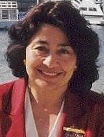 Dr.
Tulin E. Mangir,
California State University
Long Beach Dr.
Tulin E. Mangir,
California State University
Long Beach
"SOC
Implementation Of Wireless Security Using NPU Platform"
The widespread adoption of distributed, wireless, and mobile computing makes
the inclusion of privacy, authentication and security a crucial component in
any network. Network Processor Units (NPU) are one of the key building blocks
of the access points and probes that are being used for wireless
applications. In this presentation, we will present design considerations
for implementation of security processing for SOC design for the integration
of AES algorithm blocks on an Intel IXA based chip architecture. We will
describe tradeoffs of hardware based security processing for both ASIC and
FPGA circuits. The algorithm used for this study is the AES based on
Rijndael algorithm. IP blocks have been designed using Cadence and other
design tools. Power consumption will remain a critical factor, especially
when cryptographic applications move into this embedded context, and line
speed (or close to line speed) processing is required. Finally we will make
some observations on the developing Nano scale technologies and how that
might impact the future developments of SOCs.
Dr. Mangir's current research interests are High Speed Networks, Wireless
and Sensor Networks, Dependable and Secure Communication/ Computer Networks,
and Nano Technology. Dr. Mangir has more than 25 years Academic and
Industrial experience. She is a Boeing Faculty Fellow, and Distinguished
Visitor for the IEEE Computer Society, and Distinguished Lecturer for IEEE
LEOS. She is the winner of 2005 Northrup-Grumman "Excellence in Teaching"
Engineering award. She has also been recognized by many civic and
professional groups for her contributions to science education, community
programs, and leadership in strategic and technology planning. A
representative list of the organizations she has consulted for includes:
Intel, Specialty Labs, Nokia, ChromaVision, IBM, TRW, Entertainment Arena,
Touchstone Software, NASA -Ames, NASA- JPL, Swedish Government
Microelectronics Program, KPMG, Backbone Comm., European Union, Boeing,
IEEE, Thomson Semiconductor (France), NEC ULSI Laboratories (Japan), ETRI
(Taiwan), Si Valley Research /Venture Capital firms. She also has been a
founding member for many start-ups.She has a number of patents in space-born
technology, large area integration and VLSI design. Her early research work
in the area of stacked circuits has contributed to the current multi chip
stack and 3-dimensional circuit technology evolution. Dr. Mangir received
her Ph.D. in Electrical Engineering and Computer Science/Computer
Engineering with minors in Digital Signal Processing and Microelectronics
from UCLA in 1981. |
|
|
 Dr.
Nader Bagherzadeh,
Morpho Technologies, Irvine, USA &
University of
California, Irvine Dr.
Nader Bagherzadeh,
Morpho Technologies, Irvine, USA &
University of
California, Irvine
"Are
Highly Parallel Embedded DSPs Capable of Meeting the Area, Power, and
Performance Capabilities of Current ASIC Solutions?"
The future growth and development of Systems-on-a Chip (SoC) technology
relies on the longer life cycle of the new chips in wireless communication
and media processing. The current approach of using ASIC solutions is not
economically attractive for the new generation of SoC chips, because of the
NRE expenses (mask, engineering, validation, etc.) and shorter life cycle of
the product. Therefore, a flexible technology such as reconfigurable and
highly parallel DSPs is the most cost effective approach that meets the
real-time performance and power requirements of the next generation SoCs.
Moreover, it provides a migration path across product generations meeting
new standards and in-field upgrades. In this talk first I will present
taxonomy of the current Parallel DSP techniques with emphasis on comparisons
with ASIC solutions. The second part of the presentation I will talk about
some of the existing university and industry developed architectures.
Finally, I will discuss Morpho Technologies’ solution as a case study of one
of the existing coarse-grained reconfigurable parallel DSPs targeted for
mobile baseband processing.
Dr. Nader
Bagherzadeh has been involved in research and development in the areas of
computer architecture, reconfigurable computing, VLSI chip design, and
computer graphics. For almost ten years ago, he was the first researcher
working on the VLSI design of a Very Long Instruction Word (VLIW) processor.
Since then, he has been working on multithreaded superscalars and their
application to signal processing and general purpose computing. His
current project at UC, Irvine is concerned with the design of coarse grain
reconfigurable pixel processors for video applications. The proposed
architecture, called MorphoSys, is versatile enough to be used for digital
signal processing tasks such as the ones encountered in wireless
communications and sonar processing. DARPA and NSF fund the MorphoSys
project (total support $1.5 million). Dr. Bagherzadeh was the Chair of
Department of Electrical and Computer Engineering in the Henry Samueli
School of Engineering at University of California, Irvine. Before
joining UC, Irvine, from 1979 to 1984, he was a member of the technical
staff (MTS) at AT&T Bell Laboratories, developing the hardware and software
components of the next-generation digital switching systems (#5 ESS).
Dr. Bagherzadeh holds a Ph.D. in computer engineering from The University of
Texas at Austin. As a Professor, he has published more than a hundred
articles in peer-reviewed journals and conference papers in areas such as
advanced computer architecture, system software techniques, and high
performance algorithms. He has trained hundreds of students who have
assumed key positions in software and computer systems design companies in
the past twelve years. He has been a Principal Investigator (PI) or
Co-PI on more than $2.5 million worth of research grants for developing
next-generation computer systems for solving computationally intensive
applications related to signal and image processing.
|
|
|
TBD |
|
12:00 pm - 1:00 pm
|
Lunch |
|
1:00 pm- 1:30 pm
Keynote
|
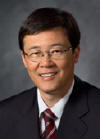 Jon
Kang, Senior Vice President of Technical Marketing, Samsung Semiconductor Jon
Kang, Senior Vice President of Technical Marketing, Samsung Semiconductor
"Why
Memory has Become The Technological Catalyst for the Mobile Era"
A shift
of historical proportions is underway in digital and consumer electronics.
The rise of a new era – digital mobility -- is being fueled by something
that has been around since the introduction of semiconductors: memory. Not
only is memory becoming the catalyst for a myriad of new mobile
applications, it is usurping the role that the microprocessor held in the
PC-centric world of the past two decades – as the single most important
hardware component in mobile technology. This presentation will examine the
accelerating trend to a mobile, global society, and address the technology
behind the much greater enabling role of memory in mobile applications.
In the presentation, Mr. Kang will look at how Flash memory, and multi-chip
memory packages, will enable new applications to arrive at a much faster
clip than PC technology encouraged, how image richness is enhancing the
mobile experience, and how memory price reductions are spurring market
expansion. He will discuss what this means to the migration from desktop
computers to media-capable notebooks and to the phenomenal groundswell of
consumer interest in smart phones. The presentation also will spotlight the
reasons behind the tremendous growth rate of NAND Flash over the past two
years – similar to PCs in their early years. In addition, Mr. Kang will
speak about coming opportunities for integrating advanced NAND Flash
technology such as Samsung’s OneNAND™ with new hybrid drive technology and
increasingly elaborate 3D Flash memories that are just around the R&D
corner. He will show how the lowering of operating voltages, increasing of
densities and breaking of write speed barriers hold growing significance in
a wide swath of digital markets including 3G cell phones, MP3 players,
tablet devices, advanced PDAs, USB drives, digital cameras and perhaps,
ultimately, even notebook PCs, as well as new markets such as GPS-based
tracking devices. The presentation’s main message will be to spotlight
the critical role of high speed, low-power memory and how that role is
mushrooming as mobile products decrease in size and mobile applications
proliferate.
Jon
Kang is the Sr. Vice President of Technical Marketing at Samsung
Semiconductor, a US subsidiary of Samsung Electronics. In this role, he has
responsibility for all engineering design in activities for memory products
and mobile SOC products. Previous to this, he has worked in various
functions at Samsung Electronics Semiconductor Business Unit in Korea
including NAND Flash Enabling, Product Planning, QA, and Process
Integration. He joined Samsung Electronics in 1983 and is a graduate of
University of Illinois at Urbana-Champaign. |
|
1:30 pm - 4:15 pm |
Memory
Sub-System for System-on-Chip Designs |
|
|
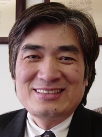 Peter
Lee, President & CEO, Aplus Flash Technology Peter
Lee, President & CEO, Aplus Flash Technology
“Who’s got the right of way? Choosing the right process and IP for your
NVM based SOC products”
The SOC trend for wireless applications continues as process technologies
shrink while functions, IP blocks and integration demands increase.
Non-volatile memory, particularly flash, is becoming an integral part of
the SOC solution, consuming increasing amounts of the area on shrinking
dies. Increasingly, companies are relying more than ever on third party IP
for their embedded memory needs. However, currently there is no prevalent,
available embedded flash solution for 0.18um process nodes and below.
Unlike typical IP blocks, NVM IP typically involves incompatible
high-voltage processes and requires additional process and design changes
for manufacturing integration. However, there have also been a slew of
newly introduced logic-compatible NVM IPs. Thus begs the question: should
the process be NVM compatible or logic compatible? What are the tradeoffs
in die size, data retention, process steps, etc. that come into play when
debating whether to choose a NVM-compatible process or a logic-compatible
process NVM? The presentation will introduce the various available NVM IP
to embed in wireless/contactless SOC products. Companies designing SOC
products for different applications can gain an understanding to how the
right embedded memory can improve their product functionality, development
costs, development efforts and throughput, and ultimately help them create
a product that cost-effectively meets the needs of their customers’
applications and end markets.
Topics covered include: What are the differences between ROM, OTP, NTP,
EEPROM and FLASH memory? What kinds of applications do these various IP
serve? What process technologies are these NVM IP available on? What
considerations should customers keep in mind when choosing an NVM IP?
Process: NVM or logic compatible? What are the tradeoffs? Why isn’t there
a prevalent embedded flash solution for 0.18um and below? Aplus will
present its patented MaxFlashTM, an embedded NVM IP solution that
converges the performance of data and code storage with byte alterability
served by the NAND, NOR and EEPROM markets.
Mr. Lee is the Founder, President & CEO of Aplus Flash Technology. He has
over 20 years of proven NVM design experience in the industry and
currently holds over 50 flash-related patents. He began his design career
at AMD’s Mask ROM and EPROM departments in 1983. When working for Samsung
in 1986, he led a team to successfully develop its 512Kb CMOS EPROM. In
1987 he joined MMI’s 1st EEPROM CMOS PAL design team. In 1988 he
co-founded his 1st company, Elite Semiconductor, which was in the Mask ROM
and EPROM business. Elite later merged with Mosel-Vitelic. After he
founded Aplus, it immediately became a major embedded EPROM and ROM
technology provider to prominent companies such as Winbond, UMC,
Mosel-Vitelic, Novatek, Elan, Sharp, etc. Aplus Flash Technology now
provides a full range of non-volatile memory IP from ROM, OTP, NTP, EEPROM
and FLASH to customers worldwide such as SMIC, Episil, IPCORE, Synaptics,
Datang, etc. He holds an MSEE degree from the University of New Mexico.
|
|
|
 Jim
Cooke, Principal Applications Engineer, Micron Semiconductor Jim
Cooke, Principal Applications Engineer, Micron Semiconductor
"On-Chip or Off-Chip? NonVolatile Memory Trends"
One of the most important questions designers are asking today is whether
to integrate Flash technology on-chip or move it off-chip. In this
presentation, we will discuss the growing acceptance of off-chip NAND
Flash technology in embedded applications such as set-top boxes, MP3
players, digital cameras, and new smart cell phones. In the process, we
will cover trends, reliability challenges, and advanced new features and
security enhancements in NAND technology. We will also explore new
possibilities in performance and power trade-offs in the smaller
geometries as we move toward mass production on 90nm—and in the near
future on 65nm. And finally, we will present packaging trends that present
a feasible and promising option to integrating on-chip memory.
Jim Cooke is a Principal Applications Engineer for Micron’s Mobile Memory
Group. Prior to joining Micron, he managed the applications engineering
group and hardware engineering team for Toshiba America Electronic
Components. Mr. Cooke has over 20 years of hands-on systems-level design
experience in embedded applications and digital consumer markets. He holds
a BSEE from the University of Massachusetts.
|
|
|
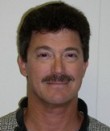 Michael
Fliesler, Vice President of Engineering Michael
Fliesler, Vice President of Engineering
Kilopass Technology, Inc.
"An embedded non-volatile memory, using standard logic CMOS,
for SoC Design"
System-on-Chip (SoC) platforms require non-volatile memory
for firmware code storage, configuration, encryption, or trimming of analog
blocks. Previous technology used either mask-programmed ROM (not
field-programmable), a separate Flash memory chip, or embedded Flash
technology, which adds cost, and can compromise IP security. This paper
describes a novel high-density, non-volatile memory implemented in standard
logic CMOS process. No additional mask or processing steps are required.
The memory is available at several technology nodes (0.18u, 0.15u, 0.13u,
90nm) at multiple foundries. The hard macro IP blocks feature simple
program and read operation. The presentation will cover the benefits,
target applications and the basic design methodology to use this new memory
IP technology for low ( 8 bits) to high density (up to 256Mb)embedded
applications. The technology will be described and compared to other
programmable technologies. Examples of cost and time-to-market reduction
will be presented, plus applications to SoCs requiring embedded code storage
for firmware, identification or security applications.
Mr. Fliesler has over 30 years of experience in the
semiconductor industry, with 20 years specialized in the field of FLASH,
EPROM, and EEPROM development. Mr. Fliesler was formerly Director of Design
in the Flat Panel Display Division at National Semiconductor. Prior to
National, he was Director of Engineering Services at AMD in the Flash Memory
Group. Mr. Fliesler holds six patents and has published five technical
papers. He received the BS and MS degrees in Electrical Engineering from
Stanford University. |
|
3:00 pm - 3:15 pm
|
 Coffee
Break Coffee
Break |
|
|
 Dr.
Leung, Wing-Yu is Executive Vice President, Engineering and Chief Technical
Officer, MoSys Corporation Dr.
Leung, Wing-Yu is Executive Vice President, Engineering and Chief Technical
Officer, MoSys Corporation
"I
need more memory: Do I trench or do I stack?"
Being able to embed large amounts of memory into System on
Chip devices has long become a key requirement. 1T-SRAM® technologies have
delivered optimal combinations of high density, low power, and high-speed
memory products across multiple process generations. As the semiconductor
industry keeps its quick path to atomic dimensions, high-density memory
designers face the challenge of dealing with shrinking semiconductor
structures and still store data reliably. From a physical perspective, there
are two leading strategies for creating very dense memory bit cells - namely
trench and stacked capacitor implementations. This paper will compare these
two alternatives on qualitative and quantitative ways. Aspects like
resulting silicon area; energy consumption; performance; manufacturability;
reliability, and scalability to smaller geometries will be analyzed.
Leung, Wing-Yu is Executive Vice President, Engineering and
Chief Technical Officer and a board member. Prior to joining the company,
Dr. Leung served as a technology consultant to several high technology
companies. Prior to that time, Dr. Leung served as a member of the technical
staff of Rambus, and as a senior engineering manager at Integrated Device
Technology, Inc. where he managed and participated in circuit design
activities. Dr. Leung earned his bachelor's degree in Electrical Engineering
from the University of Maryland, a master's degree in Electrical Engineering
from the University of Illinois and a Ph.D. in Electrical Engineering and
Computer Science from the University of California at Berkeley. |
|
|
 Ken Potts,
Sr. Product Marketing Director,
Virage
Logic. Ken Potts,
Sr. Product Marketing Director,
Virage
Logic.
"Silicon Aware IP
Embedded Memory Strategy for 65nm and Below"
Today's application processor System-on-Chips (SoCs) are an example of the
highly complex, embedded memory laden CMOS ICs that are pushing the gate
density envelope at leading foundry process nodes. The application space
imposes power, performance and cost constraints on the SoC and by
extension, to the 80% of the design that can be embedded memory. At 65nm
and below, the embedded memory must be optimized with respect to the
manufacturing constraints to achieve desired electrical performance and
must be able to self-test and repair to ensure yield. This presentation
will look at the Virage Logic Silicon Aware IP™ approach that delivers the
best embedded memory solution for this highly complex design domain.
Ken Potts is Virage Logic’s Senior
Director, Product Marketing, for the SRAM and STAR Memory System™
products. Prior to Virage Logic, Potts was Vice President of Marketing and
Business Development for Cadence Design Systems’ X Architecture
Initiative. He also held a number of other marketing management positions
in their Synthesis, Place & Route, and Japan Field Marketing. Prior to
Cadence, he held various marketing and engineering positions at Compass,
Cirrus Logic, and VLSI Technology. He received his Bachelor of Science
degree in Electrical Engineering from Montana State University.
|
|
4:15 pm - 5:30 pm |
Panel: Memory Sub-System for System-on-Chip Designs
|
|
|
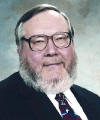 Dave
Bursky,
Editor-at-Large,
Electronic
Design
Magazine Dave
Bursky,
Editor-at-Large,
Electronic
Design
Magazine
Moderator
Dave Bursky, Editor-at-Large for Electronic Design magazine,
joined Electronic Design in 1973, and has worked in various editorial
positions, amassing more than 30 years of experience covering technology and
product developments in the electronics industry. Promoted to
Editor-in-Chief in the fall of 1999 and to Editor-at-Large in early 2003, he
has been responsible for defining the direction and content of Electronic
Design. In addition to the editorial management responsibility, he has
covered all aspects of Digital Semiconductor Technology, from processes to
architectural definition, and from testing to circuit applications, for the
magazine. He travels extensively around the
U.S. as well as
to Asia and Europe to interview company executives, and to attend trade
shows and symposiums.
Additionally, Dave is one of several Electronic Design editors
awarded the Jesse H. Neal award for Editorial Excellence. In 1988 he was
described by an article in the San Jose Mercury News newspaper as one of the
100 most influential people in Silicon Valley. He has also taught digital logic technology at
the former RCA Institute in
New York City,
and has been a guest lecturer at the
Naval
Post-Graduate School in Monterey, Calif.. Additionally, he has served on the
program committees of numerous IEEE and commercial conferences, and has also
moderated and organized technical presentation sessions at IEEE and
commercial conferences. He has also authored six books on topics ranging
from personal computers to semiconductor memories.
Prior to joining Electronic Design in 1973, he worked as a
civilian electronics engineer at
Fort Monmouth,
N.J. on tactical computer systems and secure communication systems. Dave
holds both Bachelor's and Master's degrees in Electrical Engineering from
the City College of the City University of New York (1971 and 1973,
respectively).
Dave lives in
Silicon Valley
and is married and has two children. In his spare time, he enjoys reading,
stamp collecting, electronics (home-brew computing), and traveling.
|
|
|
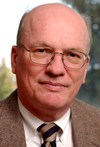
Robert Payne, Senior vice president and general manager of
System Technology and Architecture, Philips
"Panelist"
Robert
Payne joined Philips Semiconductors by way of the VLSI Technology Inc
acquisition in early 1999. Bob had joined VLSI in October 1989 after 21
years with Honeywell in IC Design and CAD Management roles. His initial
assignment in VLSI was as manager of the Technology Centers in the South and
Central portion of the US. After that, Payne was manager of graphics
development for VLSI’s PC Products division. Then from 1992 through early
1997 served as Chief Technical Officer with responsibility for the ASIC Core
Technology. Payne then took on the assignment of leading VLSI’s design reuse
IP development and the VLSI Velocity ™ new design paradigm based on the
Rapid Silicon Prototyping concept. After VLSI's acquisition Mr. Payne is
continuing this work on the advanced design process through a thrust we call
"System ASIC Technology" and serves as the US CTO in a guardian role for
Philips CTO employees based in the USA. Robert Payne holds an MBA from the
College of St. Thomas, St. Paul, Minnesota, a BSEE and MSEE from the
University of Minnesota, Minneapolis. |
|
|
 R.
Mark Gogolewski, CTO, Denali Software R.
Mark Gogolewski, CTO, Denali Software
"Panelist"
Mark
Gogolewski brings over eleven years of EDA experience to Denali Software as
co-founder and Chief Technology Officer. At Denali, Mr. Gogolewski has led
the development of key simulation and verification technologies focused on
advanced memory system design and verification. Most recently, he led
Denali's Semiconductor IP team from concept to production of the industry's
first configurable memory controller core solution -- Databahn™. Mr.
Gogolewski holds a BS in Applied Mathematics and an MS in Engineering
Physics from the University of Virginia. |
|
|
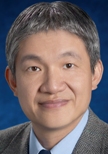
Jason So,
Director of Business Development, Custom LSI Strategic Business Unit, NEC
Electronics America, Inc.
"Panelist"
Jason So
currently serves as director of business development in charge of SoC, ASIC,
COT and ASSP development for NEC Electronics America’s Custom LSI strategic
business unit.
Prior to joining NEC Electronics America in 1999, Mr. So worked 17 years for
ST Micro, beginning as a senior ASIC designer and advancing to senior
principal engineer and senior ASIC engineering manager. Before that, Mr. So
spent three years as an ASIC designer at Texas Instruments. Mr. So
holds multiple patents in Japan, Europe and the U.S. for semiconductor
fabrication process control and development, circuit design and
electrostatic discharge protection methodologies. He holds a bachelor’s
degree in electrical engineering from Concordia University in Canada and a
master’s degree in electrical engineering from the University of Houston. |
|
|
 Jauher
Zaidi, CEO of Palmchip Corporation and Member, Savant Board of Advisors Jauher
Zaidi, CEO of Palmchip Corporation and Member, Savant Board of Advisors
"Panelist"
Jauher Zaidi is Chairman & CEO
of Palmchip Corporation. Jauher has over twenty years of experience in
system design and integration. Before founding Palmchip in 1996, he was
involved in system-on-chip (SoC) integration at Quantum Corporation. Jauher
received his BSEE and MSEE degrees from Pacific States University in Los
Angeles, California. He has also participated in many SoC panels and is a
recognized expert in the area of SoC development. |
|
|
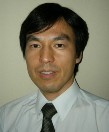 Yohji
Watanabe, Embedded Memory Design Dept. Yohji
Watanabe, Embedded Memory Design Dept.
SoC R&D Center, Toshiba Corp.
"Panelist"
Yohji Watanabe is Senior
Manager of Embedded Memory Design Dept. at Toshiba SoC R&D Center, Kawasaki
Japan. He has over 20 years of experience in design and development of
commodity and embedded DRAM. His current responsibilities include research
and development of advanced embedded memories such as DRAM and SRAM for high
performance and low power system LSIs. Mr. Watanabe received the B.S. and
M.S. degrees in Electronic Engineering from Tohoku University, Sendai,
Japan. |
|
|
|
|
Panelist Names |
Panel: Memory Sub-System for System-on-Chip Designs
Moderator:
Dave Bursky,
Editor-at-Large, Electronic Design
Magazine
.
Panelists:
1.
Robert Payne,
Senior vice president and general manager of System Technology and
Architecture, Philips Semiconductor
2. R. Mark Gogolewski, CTO,
Denali Software
3. Phillip LoPresti, Associate
Vice President and General Manager, Custom LSI Solutions, NEC Electronics
America, Inc.
4.
Jauher Zaidi,
CEO of Palmchip.
5.
Yohji Watanabe, Embedded Memory
Design Dept.
SoC R&D Center, Toshiba Corp.
6. TBD. |
|
4:30 pm - 8:30 pm |
Conference Exhibit & Reception Open
|
|
|
|

8:00 am - 8:15 am |
 Farhad
Mafie, President and CEO of Savant Company Inc. Farhad
Mafie, President and CEO of Savant Company Inc.
"Welcome and Opening Remarks and Conference updates"
Farhad
has over 20
years of experience in semiconductor and computer businesses and more than 10
years of university-level teaching experience. Farhad is the former
Vice President of Marketing/Business Development and Technical Sales Engineering at
Toshiba America Electronic Components, Inc. He was responsible for marketing
the entire Toshiba standard ICs (RISC/CISC CPUs, Configurable CPUs, DSPs, Bluetooth,
Wireless ICs, RFID, MPEG-4, CCD/CMOS, Analog ICs, Automotive ICs, etc.).
He was also responsible for engineering development for Toshiba's Embedded and Digital Consumer
products & solutions based on ASSP and SoC Models.
Farhad established Toshiba's on-line
Tech-Support System as well as Toshiba's on-line System Solution Selling
methodologies for all Toshiba's products in the North American markets.
These on-line systems were adopted by Toshiba on a worldwide basis. He
also developed Toshiba's ASSP Business Unit and Technical Sales Engineering
Team as two brand new organizations for the company.
Farhad has also worked at Lucent Technologies
on marketing communications ICs,
Toshiba Information Systems on product definition for Toshiba's notebooks
and handheld products, Unisys on designing new processors and computer
systems, and MSI Data on
designing data collection products. He has a Master of Science and a
Bachelor of Science degree in Electronic Engineering from California State
University, Fullerton.
His combined business and academic experience has
given Farhad a unique ability to effectively communicate complex new
technologies to business professionals at all levels, as well as the ability to
foresee emerging leading-edge technologies.
Farhad is an author and a
translator, and he writes articles for a variety of journals and Web-based
magazines on technology and political affairs.
|
|
8:15 am - 8:45 am
Keynote
|
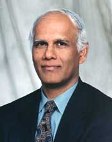
Professor Tummala, pettit chair professor in Microsystems
packaging, Georgia Institute of Technology
"SIP & SOC"
Dr. Rao Tummala received the
BE degree in Metallurgical Engineering from the Indian Institute of Science,
Bangalore, India and the Ph.D. degree in Materials Science and Engineering
from the University of Illinois. He joined the faculty at Georgia Tech in
1993 as a Pettit Chair Professor in Electronics Packaging and as Georgia
State Research Scholar. He is also the Director of the Microelectronic
Systems Electronic Packaging Research Center funded by NSF as one of its
Engineering Research Centers, the state of Georgia, and US electronics
industry. Prior to joining Georgia Tech, he was an IBM Fellow at the IBM
Corporation, where he invented a number of major technologies for IBM's
products for displaying, printing, magnetic storage and multichip packaging
for which he received 16 Technical, Outstanding and Corporate Awards from
IBM. He is both a fellow of IEEE and the American Ceramic Society, a member
of the National Academy of Engineering, 1996 President of IMAPS and current
president of the IEEE-CPMT Society. He was recently named by Industry Week
as one of the 50 Stars in the US, for improving US competitiveness. He is
co-editor of four widely-used Microelectronics Packaging Handbooks. He
published 205 technical papers and holds 68 US patents and inventions. He
has received many awards: David Sarnoff, sustained technical achievement
award from IEEE, John Wagnon's award from IMAPS, Materials Engineering
achievements award from ASM-I, Distinguished Alumni Honor award from
University of Illinois and the Indian Institute of Science, and Arthur
Friedberg Memorial award and the John Jeppson Award from American Ceramic
Society, the Total Excellence in Electronics Manufacturing (TEEM) Award from
the Society of Manufacturing Engineers, and the European Materials Award
from DVM. He recently received the highest faculty award at Georgia Tech,
the Distinguished Faculty Award.
|
|
8:45 am - 12:00 am |
New Trends and Approaches for ASIC & SoC
Designs
|
|
|
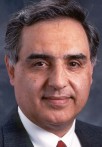 Ray
Abrishami, Senior Director of SoC Engineering and Marketing, Fujitsu
Microelectronics America, Inc. Ray
Abrishami, Senior Director of SoC Engineering and Marketing, Fujitsu
Microelectronics America, Inc.
"Broadband Wireless Everywhere. A Step Closer"
Today’s highly integrated SoC implementation of the 802.16
standard employs an advanced sub-micron CMOS technology. Coupled with the
use of sophisticated power-management techniques in design, this technology
ensures the lowest possible power dissipation, minimizing the overall
packaging cost and consequently the chip cost. Fujitsu has developed a
cost-effective, fully integrated MAC and PHY mixed-signal baseband processor
for Broadband Wireless Access applications. The industry’s most integrated,
modular, scalable, and cost-efficient solution, this comprehensive SoC
incorporates all the features required to enable cost-effective,
WiMAX-compliant systems to end-users. This SoC is designed to support
frequencies ranging from 2 to 11GHz in both licensed and license-exempt
bands. It supports all available bandwidths from 1.75MHz to 20MHz. The
Fujitsu WiMAX SoC fully complies with the IEEE 802.16-2004 WiMAX standard
and can be configured to be used in both base station and subscriber station
applications. Highly efficient adaptive modulation schemes, including 64QAM,
16QAM, QPSK and BPSK, are supported by this SoC. The SoC’s data rate can go
up to 75Mbps when applying the 64QAM modulation in a 20MHz channel and using
all 192 sub-carriers. Uplink subchannelization, as defined in the standard,
is also supported. Performance enhancement can be realized with the dual
RISC engines embedded into the SoC. These two processors not only gracefully
handle the essential functions required by the WiMAX specification, but also
allow additional headroom to handle user-application software.
Ray Abrishami is currently the Senior Director of SoC
Engineering and Marketing at Fujitsu Microelectronics America, Inc. (FMA).
His responsibilities include product marketing for FMA and SoC development
for specific vertical markets such as WiMAX-compliant broadband wireless,
VoIP and biometric sensor products. He also oversees the development of FMA
solution platforms for SoC involving IP development, acquisition and
integration with processor cores and peripheral sub-systems as part of the
IPWare™ SoC program. Before joining Fujitsu, Abrishami worked at LSI Logic
Corporation where he held various senior engineering management positions in
the ASIC Division. His responsibilities included design methodology
development, cell architecture, circuit design and design library
development functions. He also had engineering management responsibility for
the development and delivery of several generations of sub-micron technology
products. Abrishami has been closely involved in the definition and
development of SoC, intellectual property, top-down VLSI design
methodologies and automation tools in the areas of front-end design,
physical design and test/testability. Prior to joining LSI Logic, Abrishami
held the highest-level engineering and general management positions at Data
General Corporation‘s Semiconductor Division where he directed the VLSI
system development groups. He led the development and release of VLSI chip
sets for three generations of computer systems. Abrishami represented LSI
in the Semiconductor Research Corporation’s (SRC) Design Sciences Technical
Advisory Board. He was chairman of SRC's Design Sciences Technical Advisory
Board in 1996. From 1994-1997, Abrishami was also a member of the Design and
Test Technical Working Group (TWG), responsible for the development of the
National Technology Roadmap for Semiconductors. Abrishami holds bachelor’s
and master’s degrees in electrical engineering from San Jose State
University. He participated in Stanford University’s engineering management
program, and is a member of IEEE, Tau Beta Pi and Eta Kappa Nu. He has been
granted three U.S. patents in circuits and systems. |
|
|
 Robert
Madge, Director, Technology Marketing, LSI Logic Corporation Robert
Madge, Director, Technology Marketing, LSI Logic Corporation
"Deep Sub-Micron Compound Complexity - System Level Package
Interconnect Co-Design Methodology"
As ASIC/SoC designs migrate deeper into nanometer silicon
technology, packaging technology is challenged to maintain pace with the
integration and performance capabilities offered. Higher signal IO density
in the package as a result of shrinking die sizes, multiple I/O protocols,
support for high speed gigahertz SerDes, high speed single ended signal I/O,
power support to core logic and the ability to support the overall power
dissipation requirements of the complete design are just some of the design
challenges. No longer is package design done in a vacuum. Enhanced co-design
methodologies have been developed to ensure individual pieces of IP and
integrated into a single, working product solution. On top of these
considerations are the integration challenges at the system level.
Today, system designers are challenged to design in cost effective
techniques, which keep development and product costs down but provide
performance and integration enhancements over previous generations. All of
this with finite and sometimes unknown market windows. Successful
implementation of ASIC/SoC design requires a complete understanding of the
system environment in which they will operate. Designing in system-level
constraints into the ASIC/SoC design flow is the most successful way to
ensure Right-First-Time™ solutions. Although no complete set of tools exist
today, managing system-level design constraints into the ASIC/SoC design
methodology can be achieved. This paper will address the SoC design
challenges in 130nm and 90nm, with specific focus on packaging and IP
co-design technology solutions.
Robert Madge is a director of Technology Marketing at LSI
Logic responsible for strategic marketing of Silicon, Packaging and Test for
the company’s cell-based ASIC and RapidChip® Platform ASIC products. He is
also responsible for introducing LSI Logic’s next generation process
technologies. Before joining the marketing organization, Madge was part of
LSI Logic’s product engineering organization, playing a key role in the
start-up and success of the Gresham and foundry manufacturing operations.
Madge joined LSI Logic in 1989, and has held various product engineering
positions in the United States, Europe and Hong Kong. While in Hong Kong, he
set up the Pan-Asian Test and Product Engineering Operations. Madge holds
over ten patents and is a regular industry presenter and panelist in the
areas of Test, Yield and Design for Manufacturing. He received the best
paper awards at the International Test Conference (ITC) 2000 and the VLSI
Test Symposium (VTS) 2003 and was the Invited Plenary Speaker at ITC in
2004. Madge graduated from Sheffield University in England. |
|
9:45 am - 10:00 am |
 Coffee
Break Coffee
Break |
|
|
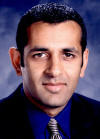 Ronnie
V. Vasishta,
CEO, eASIC Corporation. Ronnie
V. Vasishta,
CEO, eASIC Corporation.
"New
Trends in ASIC/SoC Design"
The semiconductor and associated technology industries
survived a few years ago the worst economic downturn. After the dust settled
on this nuclear winter the results are plain to see. One of them is an
unprecedented imbalance between technology complexity and economic rewards.
Never before has such complex technology been delivered to the market at
such a low value point.
On one hand, today’s consumer-driven market keeps demanding
more sophisticated products at lower prices. However, on the other hand, the
cost of designing and manufacturing the semiconductor devices for these
products is growing exponentially. Justifying the skyrocketing development
costs, means a continuous search for the next “killer application” which
can guarantee success and significant return on the investment. As the cost
of customization of semiconductor devices in particular has reached an
unprecedented high, this is an ideal and fertile environment for a
disruptive technology to emerge and change the entire equation. The change
is upon us. A new era of low cost and therefore mass customization in the
semiconductor industry is now possible. This is being fuelled by more than
just the new breed of products called “Structured ASICs”. These are just
the tip of the iceberg. New techniques such as maskless lithography and cost
effective programmable or platform ASICs that have one day turn around in
design and a few days of turn around in the manufacturing process will have
dramatic economic and innovation consequences. The electronics system
industry will face a new set of challenges where features not just price can
once again play an important role in building a successful business.
Ronnie Vasishta is responsible for all marketing activities
and strategy related to the company’s Structured ASIC and embedded
configurable logic products, which utilize award winning via configurable
logic technology. Prior to joining eASIC, Ronnie Vasishta was Vice President
of Technology Marketing at LSI Logic where he spent 17 years of his career.
In this position, he oversaw LSI Logic’s strategic technology direction and
direct marketing support for customers, sales, vertical market groups and
design centers. He was also charged with the definition and development of
LSI Logic's technology products including silicon technologies, advanced
packaging, mixed-signal, embedded memory, I/Os, and methodologies. Most
recently, he was responsible for the definition, marketing and ramp of LSI
Logic’s RapidChip product line. Prior to LSI Logic, Vasishta held process
and test engineering positions at Motorola Incorporated and STC
Semiconductor. |
|
|
 Paul
Hollingworth, Senior Director, HardCopy Product Group, Altera Corporation Paul
Hollingworth, Senior Director, HardCopy Product Group, Altera Corporation
"Improving
Design Simulation and Verification using FPGAs and Structured ASICs"
Structured ASICs, the newest class of ASIC technology, are
built by integrating logic and hard IP into standard base layers. Designers
then customize the device using the last few metal layers, offering faster
development time and low unit cost. However, many structured ASICs still
require considerable time and effort for design simulation and verification
to reduce the risk of any problems that could cause a costly re-spin, just
like standard-cell ASIC design. Furthermore, the design cannot be tested
until ASIC prototypes are available. Prototyping an ASIC or SoC design using
field programmable gate arrays (FPGAs) can relieve the time bottleneck and
remove the high caliber compute resources required to functionally simulate
and verify a medium-to-large sized design. A single FPGA prototype, for
example, can verify hardware, firmware, and application software design
functionality before first silicon is brought in-house. This presentation
will discuss the benefits of using FPGAs and structured ASICs to improve
simulation and verification of ASIC or SoC designs in less time, thereby
reducing the overall risks of ASIC or SoC development.
Paul Hollingworth is the Senior Director of the HardCopy Product Group at
Altera. Mr. Hollingworth joined Altera in 1996 as the European Marketing
Manager, where he ran the product, corporate and commercial marketing
activities for Altera in Europe. Prior to that, Mr. Hollingworth spent 11
years in the ASIC industry, working for LSI Logic in England and Germany in
a range of technical and marketing roles, and at Thesys where he was
responsible for the Communications Products Group. Mr. Hollingworth received
a BSEE in physics and electronics and a Masters in microelectronics from
Durham University in England.
|
|
|
 Paul
H. G. Kempf, Chief Technology and Strategy Officer, Jazz Semiconductor Paul
H. G. Kempf, Chief Technology and Strategy Officer, Jazz Semiconductor
"RF & Analog Integration"
The semiconductor industry has recently been emphasizing a
trend toward integration of precision analog and RF circuitry in CMOS for
system-level chips, but is currently encountering significant obstacles in
realizing this goal. Growth is rampant in the number and type of RF
interfaces required to support voice, data, positioning, video, television
and radio in portable devices. Complexity in the analog/RF sub-system begs
for technology solutions that enable flexible implementation of new features
without compromising performance and time-to-market. The industry roadmap
does not provide a viable technology path for single chip integration of all
analog blocks in advanced geometry CMOS, so while the digital sub-system
absorbs the signal processing requirements for new networking and
multi-media functions, the entire analog sub-system remains as the next
opportunity for integration.
Paul Kempf is the Chief Technology and Strategy Officer at
Jazz Semiconductor, an independent semiconductor wafer foundry for specialty
CMOS process technologies optimized for integrated analog and mixed-signal
semiconductor chips. His responsibilities include R&D, Design Services,
Strategic Development and Communications. Before joining Jazz in March 2002,
Mr. Kempf was Vice President of the Silicon RF Platform group at Conexant
Systems where he led the development of advanced analog and RF CMOS
processes, and was responsible for establishing SiGe BiCMOS technologies for
wireless and optical networking applications. Mr. Kempf also held several
management positions with Rockwell Semiconductor Systems prior to the
Conexant spin-off in January 1999. Prior to joining Rockwell, Mr. Kempf
spent 11 years with Nortel Ltd. in a variety of positions that included
silicon device design, process integration and program management. Mr. Kempf
holds a bachelor’s and master’s degree in engineering physics from McMaster
University in Canada. |
|
|
 Walter
Ng, Senior Director, Platform Alliances, Chartered Semiconductor Walter
Ng, Senior Director, Platform Alliances, Chartered Semiconductor
"90nm, 65nm, and below: Time for a New Foundry Model, "
The adoption of 90nm and crossover to
300mm manufacturing face enormous technical complexities as well as high
costs. These challenges have provided the impetus for innovation and led to
new dynamics in collaboration across the value chain. The presentation will
address how a common platform approach can enable a "system level" foundry
roadmap down to 45nm that comprehends system-level design needs in silicon.
This new model enables new approaches to address important issues such as
power / leakage and performance tradeoff in process development and design,
improved control of variability in manufacturing, yield impact due to
complex design and process interaction and other design-for-manufacturing
issues.
Walter Ng is responsible for identifying,
developing and executing customer and partner alliances that advance the
adoption of Chartered's solutions for the leading-edge and mainstream
technology nodes. Walter has led the company's collaboration with IBM to
define the strategy and implementation of the solutions and third-party
network for the industry's first common design enablement platform at 90
nanometer (nm) and 65nm. Previously, Walter served as senior director of
design solutions and was responsible for driving and managing Chartered's
relationships with third-party EDA and IP partners. Walter has been in the
electronic design and EDA industry for
more than 15 years. Prior to joining Chartered, Walter was director of
business development and Asia-Pacific operations with Sequence Design. In
this position, he was responsible for establishing, managing and growing
Sequence Design's Asia-Pacific sales channel and marketing activities in
addition to managing the strategic relations program for foundries, EDA and
IP partners. From 1994 to 1999, Walter worked with Cadence Design Systems,
where he held positions in strategic marketing and numerous roles in
applications engineering, consulting services, sales support and marketing.
Previously, he has held various senior design and test engineering positions
in Raytheon's Equipment Development Labs. Walter holds a bachelor's degree
in electrical engineering from the University of Massachusetts, Amherst, and
a master's degree in business administration from the University of
Massachusetts, Boston. |
|
12:00 pm - 1:00 pm |
Lunch |
|
1:00 pm - 1:30 pm
Keynote |
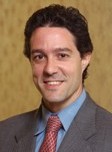 Dr. Juan-Antonio
Carballo, Venture Strategy Executive, IBM Corporation Dr. Juan-Antonio
Carballo, Venture Strategy Executive, IBM Corporation
Keynote:
"The Era of Open SoCs: Growing a VC Ecosystem
in a Standard Semiconductor Platform".
The open model for solutions development is quickly extending
from software to other technology areas, such as hardware and services.
Specifically, just as open source has spawned a revolution in the technical,
business, and legal model for software, open hardware will provide a swell
of collaborative innovation that will create entirely new markets and
provide significant business benefits to the most creative, most reliable,
and most adaptable semiconductor, EDA, System-On-Chip (SoC) and systems
houses. The open-source software stack with Linux as its cornerstone is
increasingly the preferred choice for newly venture-funded companies. Open
hardware will also change the world of SoC venture investing. While the
degree of openness and the business model may vary, SoC products have to be
increasingly developed through a collaborative model that helps assemble IP
blocks and services from multiple sources. In this keynote I'll describe the
open standards model for hardware, chip, and tool innovation, and will argue
the a systematic IP valuation methodology will help the success of this
environment, in that it will allow each member of the value chain –
especially small VC-backed companies - to capture enough value to desire to
participate."
Juan-Antonio Carballo is IBM Corporation's Venture Capital Executive for
Semiconductors and Hardware Systems, responsible for creating and managing
strategic projects with top-tier Venture Capital firms and their portfolio
companies. Prior to this role, Juan-Antonio was leading research in adaptive
communications chips at IBM Research. He won an IBM Research Division award
for his work in this area. He filed 23 patents and has over 20 publications
in low-power design, communications systems, design economics, and
electronic design management. He is the Chair of the International
Technology Roadmap for Semiconductors (ITRS) Design and System Drivers
Chapters, the Chair Elect of IEEE's DATC Committee, and VSIA's R&D Chair in
2004-5. He has been on the committee of six symposiums and conferences, and
was the General Chair for Electronic Design Processes
2004 in Monterey, CA. His prior work experience includes stays at Digital
Equipment (currently HP) and LSI Logic. Juan-Antonio holds a Ph.D. in
Electrical Engineering from the University of Michigan, an M.B.A. from the
College des Ingenieurs (Paris), and a M.Sc. in Telecommunications
Engineering from the Universidad Politecnica de Madrid.
|
|
1:30 pm - 4:15 pm |
EDA Tools & Methodologies for 65nm and Beyond
|
|
|
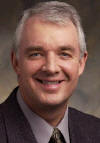 Steve
Carlson,
Director, Cadence Synthesis Team Steve
Carlson,
Director, Cadence Synthesis Team
"New
Challenges in Front-End Design"
There are a number of contributing factors that are driving
the front-end design engineer to new levels of pain that provide a strong
impetus of change. These factors, plus the new tool technologies that can
be brought to bear on them, are driving a corresponding change in the way
that front-end design is being done on advanced chips. This session
will: Give a quick overview of the market. Provide insight into the factors
that are driving change. Explain the front-end design engineer's world
viewpoint and design flow. Provide an update on the new tool
technologies for the front-end design engineer. Recount some of the
successes that have been seen using this new approach.
Steve is
a Director on the Cadence Synthesis team. In that role he is focused
on marketing the solution for the best Quality-of-Silicon (chip speed, area,
power, test measured after wires). Carlson reports to Chi-Ping Hsu,
Corporate VP for New Synthesis at Cadence. Steve joined Cadence in
April in 2003 via the Get2Chip acquisition, where he was the VP of
Marketing. Prior to Get2Chip, Steve was the CEO of Tharas Systems, a
hardware acceleration company. Steve has also held various management
positions at Escalade, LSI Logic, United Technologies and Synopsys. At
Synopsys, Steve was a part of the original Design Compiler technical team
responsible for timing analysis and optimization. Steve was the author
of the industry’s first book on high-level design: Introduction to
HDL-based Design Using VHDL. Steve has a BSEE, a BSCS, and an
MSEE, all from the University of Colorado. |
|
|
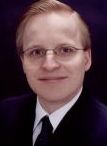 Adam
Traidman, President, Giga Scale Integration Corporation Adam
Traidman, President, Giga Scale Integration Corporation
"An
Era of Design For Cost"
In today’s world of shrinking geometries and increasingly
complex SoC designs, early and upfront architectural analysis is absolutely
required to understand the technical and economic implications of an initial
chip specification. Cost pressures for devices in the consumer electronics
space are trickling down to the desks of IC designers. Design teams are
forced to consider cost in line with feature and performance requirements.
But with many SoC’s featuring advanced power and leakage reduction
strategies, including up to a dozen different cell libraries on the same
die, estimating metrics such as power consumption, leakage, die size, yield,
and cost has gone from a simple formula based calculation to a complex
science that can only be handled by a new breed of algorithms and tools. The
solution is to analyze the deep interrelationships between manufacturing
processes, IP libraries, and chip architectures to understand how each of
these key decisions factor in to IC power, leakage, yield, and ultimately
cost. Designers need to learn new strategies to weigh these options early
in the design flow by performing rapid ‘what-if’ analysis to visualize the
technical and economic viability of their IC specification. The goal is to
reduce IC costs while still meeting functional requirements. This
paper outlines such strategies from a tool independent perspective and pays
particular focus to how these strategies can be employed by designs of
wireless devices to reduce power consumption, leakage, and total IC cost.
Adam Traidman is President of Giga Scale Integration
Corporation (Giga Scale IC). Prior to joining Giga Scale IC, he helped
pioneer the use of ASIC style physical design tools for high capacity FPGAs
while running the business development organize at Hier Design, later
acquired by Xilinx. Previously, Traidman has served in various
management and technical roles at Adaptec, Monterey Design Systems, Texas
Instruments, and the NASA Jet Propulsion Laboratory. He has extensive
architectural and implementation experience in ASIC physical design and
timing closure, specializing in 130nm and smaller geometries. Traidman is a
graduate of Rensselaer Polytechnic Institute where he received a bachelors
degree in Computer and Systems Engineering. |
|
|
 John
Gallagher, Senior Director ASIC Synthesis Marketing, Synplicity, Inc. John
Gallagher, Senior Director ASIC Synthesis Marketing, Synplicity, Inc.
"What’s Up? Growth
Areas in the Electronics Industry"
Cell-based ASICs have been in decline and are likely to continue so, for
both economic and technical reasons. However, not all areas of custom IC
design are down - changing conditions in the semiconductor and electronics
industries provide new opportunities for innovation in programmable devices
and structured/platform ASICs. The rapidly growing importance and
increasingly diverse application of FPGAs and the rise of structured ASICs
has caused significant changes in the design flows, software tools, and
engineering skill-set required by companies developing electronic systems
and IP. Examples of growth drivers include DSP content in FPGAs, ASIC/System
prototyping with FPGAs, and “derivative” product development with
Structured/Platform ASIC. Synplicity believes that these growing areas
provide an opportunity to benefit from this historic transition in the
semiconductor industry. In his presentation, Mr. John Gallagher will
discuss the several growth areas in the semiconductor industry and the
impact these are having on silicon and EDA vendors as they adapt to the
inherent challenges of this changing industry.
John
Gallagher is the Senior Director of ASIC Synthesis Marketing at Synplicity,
Inc. Mr. Gallagher holds a B.S. in Materials Science and Engineering and an
MBA from Cornell University. Prior to joining Synplicity in 1999, he served
as director of place and route marketing at Cadence Design Systems. He has
also held ASIC marketing and engineering positions at LSI Logic Corporation
and Hewlett Packard Company.
|
|
3:00 pm - 3:15 pm |
 Coffee
Break Coffee
Break |
|
|

Dr.
Tamara Papalias,
Department of Electrical Engineering, San Jose State University
"New Trends in SoC Testing &
Verifications"
This presentation is an
overview of the strategies and trade-offs for testing SOC products. The
combined effects of process scaling and increased system integration are
forcing the industry to reexamine testing methods. Now, system designs not
only push the limits of a process, but also of the test equipment. Testing
cycles are growing longer and product testing is becoming more expensive.
Until or unless revolutionary advancements aid the testing industry, some of
the testing will need to be moved from the tester into the silicon. These
integrated test circuits trade silicon real estate for enhanced process
control, ease of test program development, and access to internal nodes.
Digital circuitry has clearly-defined methodology for integrated test
structures, but analog and mixed-signal products lack standards for test (DfT)
or built-in self-test (BIST) structures. It is especially critical in these
cases as shrinking process variations force more tests to be performed
at-speed. These design speeds approach wire limitations stressing both the
package and the test gap, eventually forcing the inclusion of test
structures in all SOCs.
Dr.
Tamara A. Papalias received the B.S., M.S., and PhD. degrees in Electrical
Engineering from Stanford University, Stanford, CA, in 1995, 1995, and 2003,
respectively. She is Professor of Electrical Engineering at San Jose State
University, San Jose, CA. She held a summer staff position at Acuson in
1992 and at Elantec Semiconductor (now Intersil) from 1993 through 2001. Her
research interests include engineering education, analog and RF CMOS circuit
design, and DfT (design for test) systems. She is currently collaborating
with local companies to develop a set of courses on test engineering, from
debugging to tester operation.
|
|
|

Dr. Ramon Acosta - Vice President of Engineering,
Nascentric, Inc.
"New Tools for Adopting Nanometer Process
Technology"
The dramatic increases in
semiconductor size and complexity present significant challenges to the
design teams adopting nanometer process technology. These increases mean
that the secondary and tertiary effects of yesterday are now primary effects
today. These issues, referred to as nanometer effects include: (1) Smaller
transistor sizes that lead to larger leakage currents and greater power
consumption. (2) Pronounced non-linear transitions on the devices creating a
more analog-like response. (3) Tighter cross-coupling that induces noise and
delay problems. (4) Electromigration that leads to reliability issues.
All of these effects, and
many others not mentioned, are current-related problems, transient in
nature, and interdependent upon each other. To address the complexities of
these nanometer designs issues requires a new approach to simulation and
analysis that possess the speed, accuracy and capacity necessary to make
SPICE-accurate, transistor-level, full-chip simulation and analysis
possible.
As VP of Engineering, Ramon
guides the definition and implementation of Nascentric’s advanced,
current-based simulator architecture. Prior to joining Nascentric, Ramon was
the Chief Technology Officer at Fabric Networks, where he played a key role
in the definition and development of an InfiniBand network solution where
performance was one of the many success criteria. Ramon also served as
VP of Engineering at Pervasive Software and various management, engineering
and research positions at companies such as Scientific and Engineering
Software (SES), International Software Systems Inc. and MCC. Ramon has
over twenty-five publications in the area of software and computer
architecture. He holds a BS and MS in Computer and Systems Engineering from
Rensselaer Polytechnic Institute and has an MS and Ph.D. in Electrical
Engineering from Cornell University, carried out under the auspices of a
Cooperative Research Fellowship from AT&T Bell Labs.
|
|
|
 Richard
Gordon, T-Zero Engineering. Richard
Gordon, T-Zero Engineering.
"Facts, Myths, and Methods: The Hows and Whys of IC Power Reduction"
Richard Gordon is an entrepreneur and independent consultant
specializing in electronic design automation (EDA) software, low-power
system-on-chip design, and quantum information science and technology (QIST).
He hosts the MIT-Stanford-Berkeley Nanotechnology Forum on QIST. Most
recently, he co-founded Tera Systems, an EDA startup whose chip design
products are used by IBM, LSI Logic, and NEC. Prior to Tera Systems, he
helped start Silicon Compiler Systems (SCS), which developed microprocessor
(MPU) and DSP design software used by Intel, TI, and Sun Microsystems; SCS
was sold to Mentor Graphics in 1990. He was a Member of Technical Staff at
AT&T Bell Laboratories from 1979 to 1985 in the High-End MPU Design Division
responsible for creating the world’s first 32-bit CISC and RISC processors.
Mr. Gordon has an MSEE from Stanford University and a BSEE from Brown
University.
|
|
4:30 pm - 5:30 pm
Panel |
Panel: Low
Power Design Challenges in Complex SoC & ASIC Designs
|
|
|
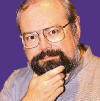
Ron Wilson, Editor, EE Times.
Moderator
Ron Wilson is Semiconductor Editor at EE Times. Wilson has covered
semiconductors, chip design and related issues for EE Times for 13 years,
with occasional brief diversions such as editing and publishing ISD
magazine. In prior lives he pursued careers in marketing management,
technical training and design engineering, obviously without catching any of
them. He has a list of publications and speaking engagements too
insignificant to mention. |
|
|
 Sunil
Baliga VP, Marketing and Business Development at K-Micro Sunil
Baliga VP, Marketing and Business Development at K-Micro
"Panelist"
Sunil
Baliga has more than 15 years of marketing experience, primarily in the
programmable logic and ASIC markets. He currently is VP, Marketing and
Business Development at K-Micro, a $500M ASIC/SoC supplier. He has a BSEE
from the University of Colorado and a MBA from Georgetown University. Sunil
served for 2-years as chair of the Network Processing Forum's marketing
working group. |
|
|
 David
Flynn,
Engineering
Fellow,
ARM David
Flynn,
Engineering
Fellow,
ARM
"Panelist"
David Flynn has been with ARM for 14 years. He is a Fellow in
the Research and Development group, based in Cambridge, UK, that specializes
in System-on-Chip IP deployment and methodology, and currently seconded to
the Sunnyvale Physical IP Division. He is the original architect behind
ARM's synthesizable CPU family and the AMBA on-chip interconnect standard.
His current research focus is low-energy system-level design and he has
technical oversight of the Intelligent Energy Manager low-power program and
silicon technology demonstrators. He holds a number of patents in on-chip
bus, low power and embedded processing sub-system design (11 US, 21
worldwide). He holds a BSc (1st) in Computer Science from Hatfield
Polytechnic, UK.
|
|
|
 Steve
Leibson, Technology Evangelist, Tensilica, Inc. Steve
Leibson, Technology Evangelist, Tensilica, Inc.
"Panelist"
Steven Leibson is the Technology Evangelist for Tensilica,
Inc. and is the co-author of the recently published book, “Engineering the
Complex SOC” (Prentice Hall, 2004). He formerly served as Vice President of
Content and Editor in Chief of the Microprocessor Report, Editor in Chief of
EDN Magazine, and Founding Editor in Chief of Embedded Developers Journal
magazine. He has written hundreds of articles for several electronics
industry trade magazines and he has won many industry awards for his clear,
detailed writing. While at MDR, Leibson developed and presented many
technical, day-long microprocessor seminars and he organized and served as
MC for the Microprocessor and Embedded Processor Forums. He holds a BSEE Cum
Laude from Case Western Reserve University and worked as a design engineer
and engineering manager for leading-edge.
|
|
|
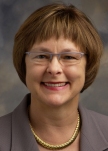 Susan
Runowicz-Smith is Marketing Director for Industry Alliances at Cadence
Design Systems, Inc. Susan
Runowicz-Smith is Marketing Director for Industry Alliances at Cadence
Design Systems, Inc.
"Panelist"
Susan Runowicz-Smith is Marketing Director for Industry Alliances at Cadence
Design Systems, Inc. and currently serves as Chair of the Silicon Design
Chain (SDC) Initiative Steering Group. Applied Materials, ARM, Cadence and
TSMC formed the Silicon Design Chain Steering Group to collaborate and drive
projects aimed at solving the toughest nanometer design issues. Most
recently the SDC completed a year long effort focusing on power management
at 90nm. During her 16 years in the EDA industry, she has held marketing and
business development positions at Simplex Solutions, product marketing for
Design Compiler at Synopsys and ASIC Design Tools marketing and EDA
Alliances at LSI Logic. She received her B.S. in Applied Mathematics from
the University of Lowell, Massachusetts in 1979.
|
|
|
 Dr.
Leung, Wing-Yu is Executive Vice President, Engineering and Chief Technical
Officer, MoSys Corporation Dr.
Leung, Wing-Yu is Executive Vice President, Engineering and Chief Technical
Officer, MoSys Corporation
"Panelist"
Leung, Wing-Yu is Executive Vice President, Engineering and
Chief Technical Officer and a board member. Prior to joining the company,
Dr. Leung served as a technology consultant to several high technology
companies. Prior to that time, Dr. Leung served as a member of the technical
staff of Rambus, and as a senior engineering manager at Integrated Device
Technology, Inc. where he managed and participated in circuit design
activities. Dr. Leung earned his bachelor's degree in Electrical Engineering
from the University of Maryland, a master's degree in Electrical Engineering
from the University of Illinois and a Ph.D. in Electrical Engineering and
Computer Science from the University of California at Berkeley. |
|
Panelist Names
4:30 pm - 5:30 pm |
Panel:
Low Power Design Challenges in SoC & ASIC Designs
Moderator:
on Wilson, Editor, EE Times.
Panelists:
1. Sunil
Baliga, VP Marketing, K-Micro
2.
David Flynn, Engineering Fellow, ARM
3.
Steve Leibson, Technology Evangelist, Tensilica
4.
Susan
Runowicz-Smith.
Cadence--Silicon
Design Chain Initiative.
5. TBD -
Toshiba
6.
Wing-Yu
Leung, CTO, MoSys.
|
|
|
|